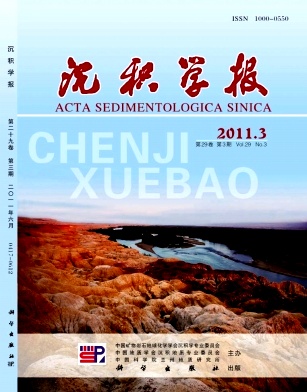Characteristics and Genesis of Ordovician Carbonate Karst Reservoir in YingmailiHalahatang Area, Tarim Basin
- Received Date: 1900-01-01
- Rev Recd Date: 1900-01-01
- Publish Date: 2011-06-10
-
Key words:
- karst reservoir /
- character /
- genesis /
- control factors /
- Ordovician /
- YingmailiHalahatang /
- Tarim Basin /
Abstract: The carbonate karst reservoir in YingmailiHalahatang area which gained breakthrough recently in Tarim Basin was controlled by lithology, karstification and tectonic evolution. So, it is very important to study the characteristics and genesis of the reservoir for the exploration and development. Based on the cores, normal thin sections, cast thin sections, cathodoluminescence, FMI and testing data, the protopores and permeability of the Ordovician carbonate karst reservoir in the study area were poor, and it's difficult to form favorable reservoir space. However, the second pores, for example, solution pores, cavities and fractures constitute the main reservoir space, and their heterogeneity in the vertical and horizontal distribution is very strong. Reservoir space according to the combination of characteristics of the Ordovician reservoir is divided into four categories: vuggy, fracturevuggy, cavern, fracture. The types of Yingmaili area are mostly fracture and fracturecavern, while the types of Halahatang area are vuggy and fracturevuggy. Overall, fracturevuggy and vuggy reservoir developed preponderantly, and they were the most excellent reservoir. Penecontemporaneous karstification, intrastrata karstification, alongstrata karstification, buriedhill karstification, burial dissolution was the main genesis of the carbonate karst reservoir in YingmailiHalahatang area. And complex and pronounced superimposed karstification made the reservoir finally becoming potential excellent one. During the depositional period of the shortterm cyclical falling in sea level, the unconsolidated carbonate sediment on the high parts of the ancient landscape exposed over the sea level to form a fabric choice of porous layer stack for further transformation of karstification as a foundation by the affection of fresh water dissolution. At the end of the Yijianfang Formation and Lianglitage Formation, Tabei area was uplifted as a whole by compression structure of Tarim Basin, making the stratified rock exposed on the surface, and controlled by the intrastrata karstification, a large number of nonfabric selective dissolution pores and dissolved fracture were formed in the depth of 130 meters under exposed surface of the top of Yijianfang Formation, and becoming an important reservoir intervals. Before Silurian sedimentation, Tabei uplift as a whole exposed on the surface, making the study area with varying degrees of erosion. The area on the north of Sangtamu pinchout underwent buriedhill karstification forming fractured reservoir. Meanwhile, the area on the south of Sangtamu pinchout underwent alongstrata karstification with porous layer by early penecontemporaneous karstification and intrastrata karstification, and the buriedhill region was the fresh water supply source, and these made the reservoir of the region being optimized. After Hercynian, the reservoir buried in a shallowdeep relatively closed diagenesis environment, the interaction between the acid stratum water and the rock under longterm buried environment resulted from of diagenesis differed from that resulted in the fresh water and marine environment, and burial dissolution occurred with cementation, and that made the early reservoir reconstructed to further increase the heterogeneity of the reservoir. Some of the high angle fractures and net tiny fractures during the Himalayan which were mostly unfilled adjusted the reservoir with a certain contribution. With the study of karstification process, it is pointed that the protopores and the sedimentary facies were the basic factors of second pores forming, and karstifications were the main factors which controlled the reservoir development, and fractures during the tectonic evolution were the key factors which accelerated the reservoir development and controlled its distribution.
| Citation: | NI Xinfeng. Characteristics and Genesis of Ordovician Carbonate Karst Reservoir in YingmailiHalahatang Area, Tarim Basin[J]. Acta Sedimentologica Sinica, 2011, 29(3): 465-474. |






 DownLoad:
DownLoad: